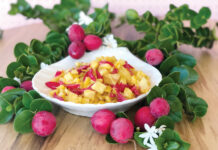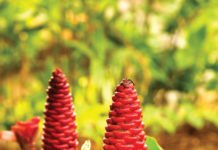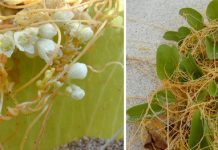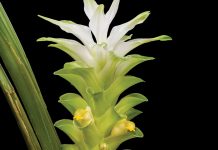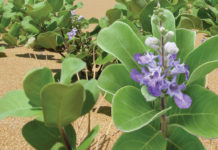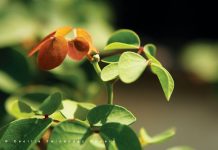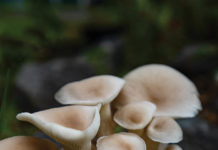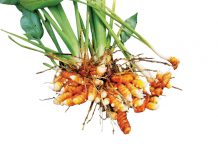Story by Shannon Wianecki
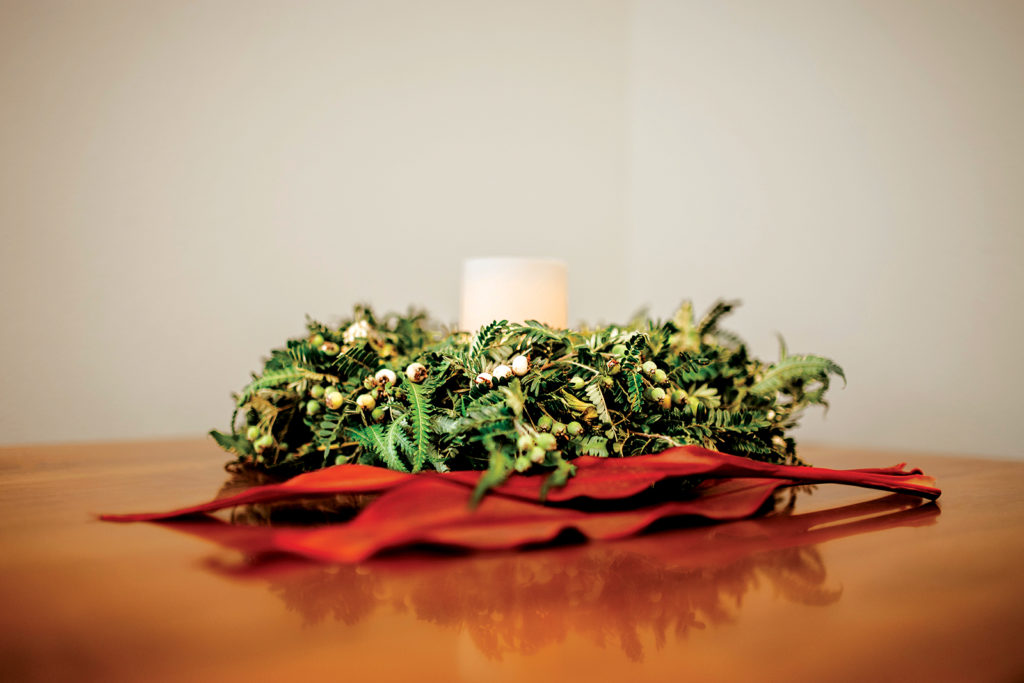 Wreath-makers on the mainland have their pick of firs and pines, but here in Hawai‘i we have the lovely ‘ūlei. This sprawling indigenous shrub is a perfect adornment for a festive table, with shiny green pinnate leaves and clusters of small white flowers. ‘Ūlei, or Osteomeles anthyllidifolia, belongs to the rose family; its blossoms exude a sweet perfume and its pale berries have a slight rose flavor. Hawaiian lei makers prize the plant and wind its strands into lei wili (twisted lei) or lei wili papa (lei lashed to a central cord).
Wreath-makers on the mainland have their pick of firs and pines, but here in Hawai‘i we have the lovely ‘ūlei. This sprawling indigenous shrub is a perfect adornment for a festive table, with shiny green pinnate leaves and clusters of small white flowers. ‘Ūlei, or Osteomeles anthyllidifolia, belongs to the rose family; its blossoms exude a sweet perfume and its pale berries have a slight rose flavor. Hawaiian lei makers prize the plant and wind its strands into lei wili (twisted lei) or lei wili papa (lei lashed to a central cord).
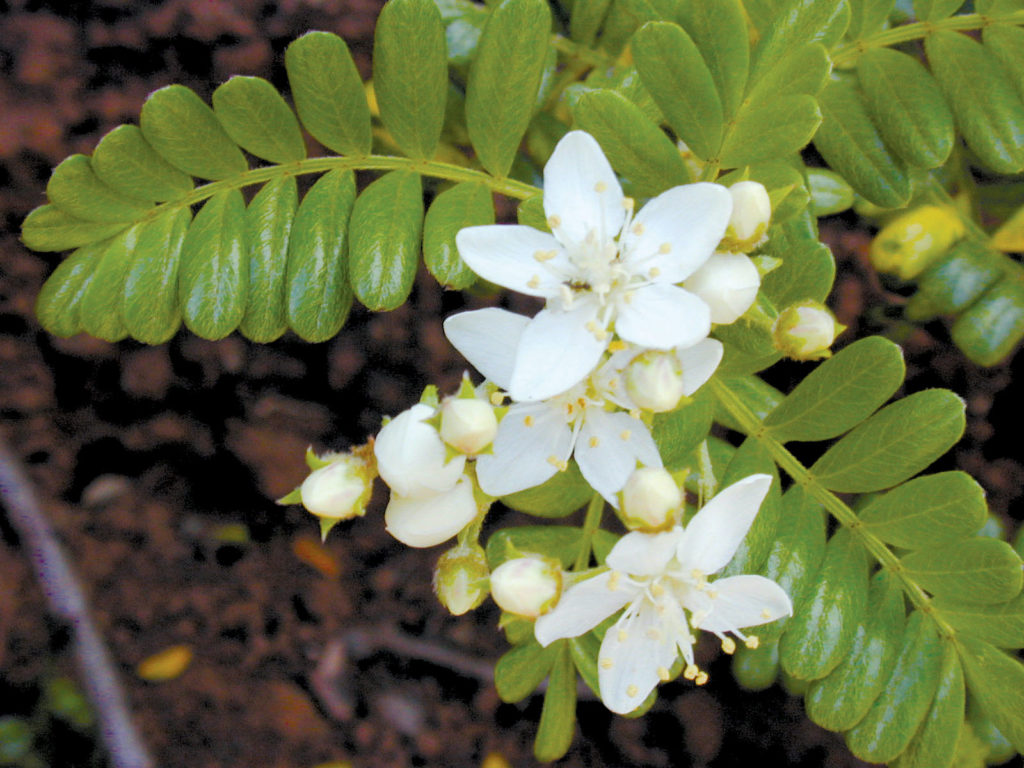
In times past, Native Hawaiians ate ‘ūlei berries when suffering from sore throats, thrush, or other ailments, and applied mashed ‘ūlei bark and leaves to open wounds. The shrub’s wood is pliant and strong, used to fashion fish-net loops, digging sticks, and small spears. Musicians turn flat strips of ‘ūlei into ‘ukēkē, clever stringed instruments held between the lips and played while chanting.
‘Ūlei grows from sea level to 7,000 feet in elevation and can be found decorating residences and resorts around Maui. It can manifest as a prostrate groundcover or an upright stubby tree with a spread of up to ten feet. If left unmanicured, its branches often reach out like the tentacles of an ambitious octopus, a tendency alluded to in a Hawaiian proverb: He ‘ūlei kolo. A creeping ‘ūlei. The expression refers to a tough, strong person. If you can’t find any ‘ūlei to harvest for your wreath, consider planting some of your own. The hardy species is one of the few native Hawaiian plants that can survive fires and resprout from the base of the stem. Its dark green foliage makes an attractive addition to any garden. To initiate flowering, cut back on watering. You can view ‘ūlei growing at the Maui Nui Botanical Garden in Kahului, or alongside the trail in Haleakalā National Park.

